
Italian postcard by Ballerini & Fratini, Firenze, no. 204. Photo: Scoffone. Italia Almirante Manzini as Violante in L'Arzigogolo (Mario Almirante 1924), an adaptation of the play by Sem Benelli.
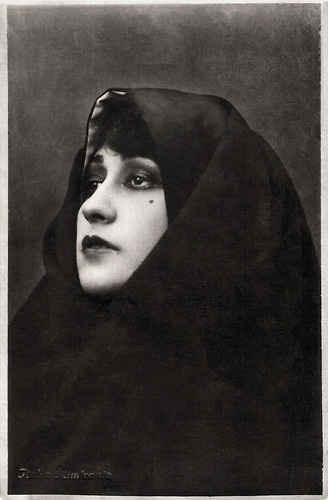
Italian postcard by G.B. Falci, Milano, no. 14.
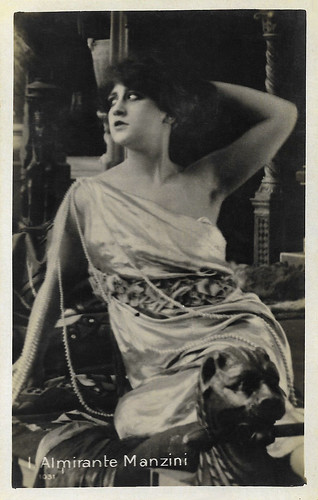
Italian postcard by Neg. Vettori, Bologna, no. 1031.
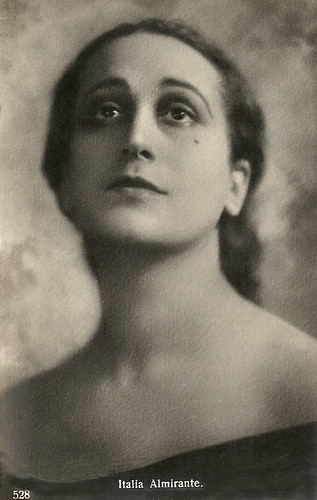
Italian postcard by Ed. Traldi, Milano, no. 528.

Italian postcard. Photo: Fert. Italia Almirante Manzini as Vielka, daughter of the king of the gipsies in Zingari (Mario Almirante,1920).
Cabiria
Italia Almirante was born in Taranto, Italy, in 1890. She was born into a family of theatre artists. Her father was the actor Michele Almirante, and her mother was the actress Urania Dell'Este. One of her cousins was film actor Luigi Almirante.
Italia also began to appear on stage and in 1911 she made her film debut for the Cines studio in Rome, where she played the lead in Gerusalemme liberata/The Crusaders (Enrico Guazzoni, 1911) and San Francesco. Il poverello di Assisi/Saint Francis: The Poor Boy from Assisi (Enrico Guazzoni, 1911), opposite Emilio Ghione.
She moved over to another pioneer film studio, Savoia Film in Turin. There she appeared in Sul sentiero della vipera/On the Trail of the Viper (Oreste Mentasti, 1912).
Two years later she had her breakthrough as the wicked Carthaginian queen Sofonisba in the influential costume epic Cabiria (1914). Director Giovanni Pastrone chose her for the role at the suggestion of author Gabriele D'Annunzio himself.
A million lira was budgeted for the film, a tremendous sum then, and location shooting was extended to Tunisia, Sicily and the Alps. The result was a tremendous success and it had a direct influence on D.W. Griffith's production of Intolerance (1916).

Spanish minicard by Chocolate Amatller, Barcelona, no. 11 of 12. Photo: Itala Film Picture from the Italian silent mega-epic Cabiria (Giovanni Pastrone, 1914), starring Italia Almirante Manzini as Sophonisba, Umberto Mozzato as Fulvio Axilla, Lydia Quaranta as Cabiria and Bartolomeo Pagano as Maciste. Here we see the death of Sophonisba, surrounded by Cabiria, Fulvio Axilla and the courtiers. She has poisoned herself, rather than become a slave to the Romans.
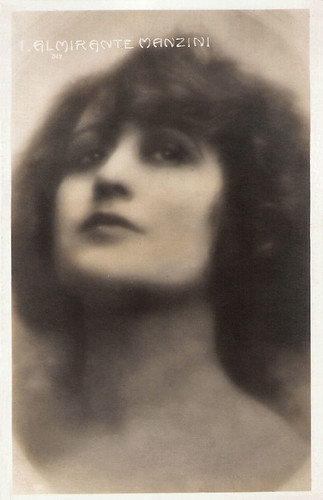
Italian postcard.
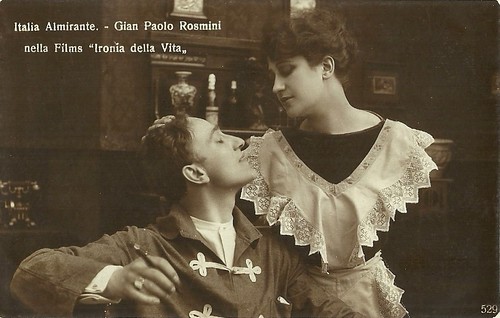
Italian postcard by Ed. A. Traldi, Milano, no. 529. Italia Almirante and Gian Paolo Rosmino in the Italian silent film L'ironia della vita (Mario Roncoroni, 1917). The film deals with Paolo who flees to the USA after a stock exchange scandal, leaving behind his wife Elena. After a year, Elena hears he died, so after another year, she remarries. But then Paolo returns, having become rich as a mining engineer... NB. The card writes Ironia instead of Ironie and Rosmini instead of Rosmino.
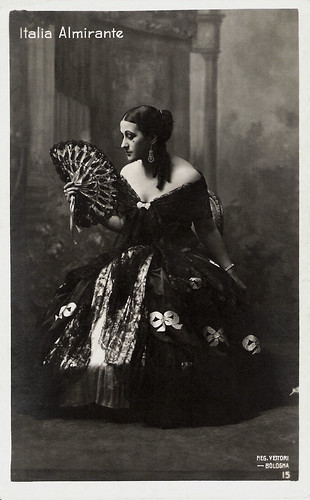
Italian postcard by Neg. Vettori, Bologna, no. 15.
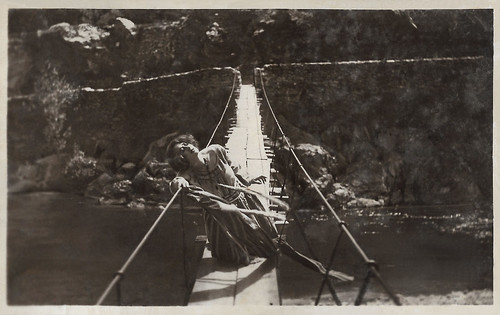
Italian postcard. Photo: FERT. Italia Almirante in Zingari (Mario Almirante, 1920). Caption: Vielka's Escape. Sent by mail in 1922.
Intense film career
In particular, between 1917 and 1922 Italia Almirante had an intense film career in Italy. She starred in films like Maternità/Maternity (Ugo de Simone, 1917), Femmina - Femina/Female - Female (Augusto Genina, 1918) and Hedda Gabler (Gero Zambuto, Giovanni Pastrone, 1920), based on the play by Henrik Ibsen.
Opposite Bartolomeo Pagano, she starred in three Maciste-films: Maciste poliziotto (Roberto Roberti, 1918), Maciste atleta (Vincenzo Denizot, Giovanni Pastrone, 1918) and Maciste medium (Vincenzo Denizot, 1918). The popular Maciste series presented the historical adventures of the strongman Maciste, who was introduced in Cabiria (1914).
When Italia married journalist/actor Amerigo Manzini in 1919 she also became known as Italia Almirante.
She was a cousin of film director Mario Almirante who directed her in nine films between 1920 and 1926, including Zingari (1920) with Amleto Novelli and La statua di carne/The Statue of Flesh (1921) and L'ombra/The Shadow (1923).
She also worked frequently with prolific directors like Augusto Genina e.g. on I due crocefissi/The Two Crucifixes (1920) and Gennaro Righelli on e.g. Il sogno d'amore/The Dream of Love (1922).

Spanish cromo by Chocolat Imperiale, no. 6 of 6. Photo: J. Verdaguer / Gladiator Film. Italia Almirante in Tua per la vita (Ugo De Simone, 1917). Epilogue: Winny Workson and the count's sister reconcile.

Spanish cromo, no. 2 of 6. Photo: Itala / Film. J. Verdaguer, Barcelona. Italia Almirante in Il matrimonio di Olimpia (Gero Zambuto, 1918), based on the play 'Le Mariage d'Olympe' (1885) by Émile Augier. Yet, the moment looks a lot like that in L'Ombra when Italia's character raises her arm and sees it reflected in the mirror - the first sign of the healing of her paralysis.

Spanish cromo by Chocolat Imperiale, Barcelona, no. 4 of 6. Photo: Distr. J. Verdaguer, Barcelona / Fert. Italia Almirante and Annibale Betrone in L'innamorata (Gennaro Righelli, 1920), released in Spain as Eva pecadora.

Italian postcard by Fotominio. Photo: G.B. Falci, Milano. Italia Almirante in La statua di carne (Mario Almirante 1921). Noemi considers whether she should stop the charade for Paolo.

Italian postcard by Fotominio, no. 52. Photo: G.B. Falci, Milano. Oreste Bilancia, Alberto Collo and Italia Almirante in La statua di carne (Mario Almirante 1921).

Italian postcard by G.B. Falci, Milano. Italia Almirante and Oreste Bilancia in La chiromante/The Fortune Teller (Mario Almirante, 1921).
Poisonous insect
In 1924 Italia Almirante Manzini played in a film adaptation of a play by Italian author Sem Benelli, L'Arzigogolo/The Fantasy (Mario Almirante, 1924).
Almirante played Monna Violante, wed by her father to the rich merchant Floridoro (Oreste Bilancia), falls in love with Spallatonda (Annibale Betrone), the buffoon of count Giano (Alberto Collo), one of her suitors. After Giano has been killed by the hand of Spallatonda, the latter flees with Monna Violante.
After the mid-1920s she turned to the stage, returning to a film set only one more time, for the film L'Ultimo dei Bergerac/The Last of the Bergerac (Gennaro Righelli, 1934) with Livio Pavanelli. It would be her only sound film.
In 1935 she went on a stage tour across Brazil and decided to stay there. In 1941 Italia Almirante Manzini suddenly died in São Paulo. The cause was a poisonous insect. She was only 51.
Recently, a book about the Almirante family was presented, Da Pasquale a Giorgio Almirante. Storia di una famiglia d’arte (Marsilio, 2016), written by one of the descendants of the family, Pasquale Almirante.
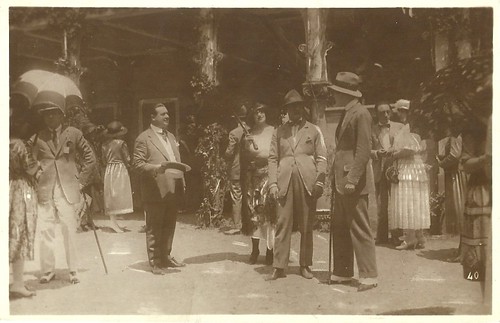
Italian postcard, no. 40. Photo: Società cinematografica FERT. Publicity still for La chiromante aka La maschera del male (Mario Almirante, 1922), starring Italia Almirante Manzini, Lido Manetti and Oreste Bilancia. Caption: At the horse races, countess Turchina meets the three inseparable friends.
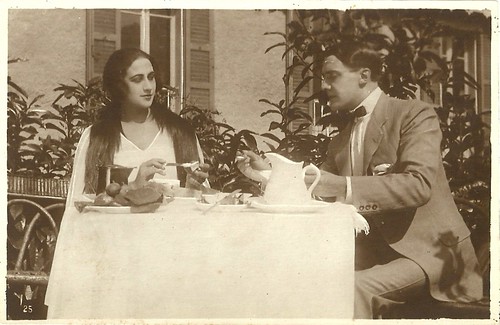
Italian postcard. Photo: Società cinematografica FERT. Publicity still for La grande passione (Mario Almirante, 1922), starring Italia Almirante Manzini and André Habay. Caption: Joint life in their retreat.
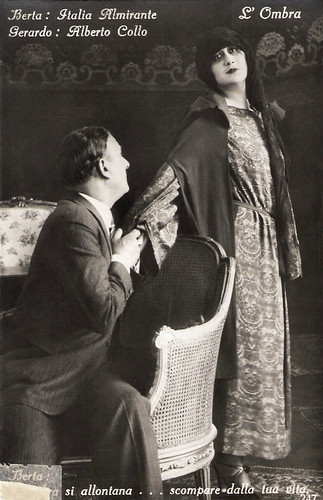
Italian postcard by Casa Editrice Ballerini e Fratini, Firenze, no. 31. Photo: Alba Film. Publicity still for L'ombra/The Shadow (Mario Almirante, 1923).
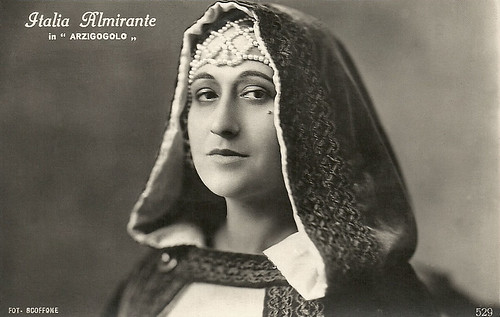
Italian postcard by Ballerini & Fratini, Firenze, no. 529. Photo: Scoffone. Publicity still for L'Arzigogolo/The Fantasy (Mario Almirante, 1924).

Italian postcard by Ed. Ballerini & Fratini, Firenze, no. 206. Photo: Negativi Alba Film. Italia Almirante Manzini as Monna Violante in L'arzigogolo (Mario Almirante, 1924). Caption: Violante leaves for the hunting.
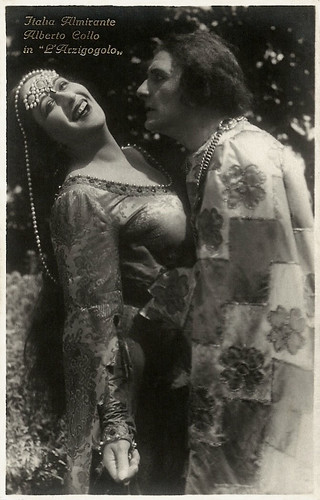
Italian postcard by G.B. Salci, Milano. Photo: Italia Almirante and Alberto Collo in L'Arzigogolo/The Fantasy (Mario Almirante, 1924).
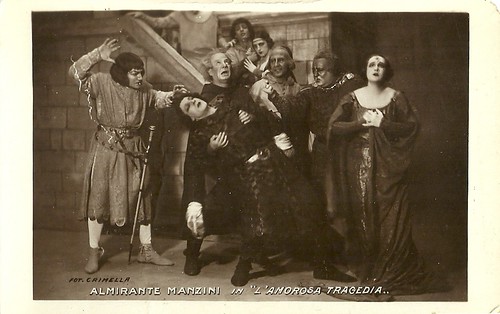
Italian postcard. Photo: Crimella. Italia Almirante in the Italian stage play L'amorosa tragedia (1925) by Sem Benelli and directed by Luigi Almirante. The play was staged by Almirante's own stage company. A young Vittorio De Sica acted in this play as well.
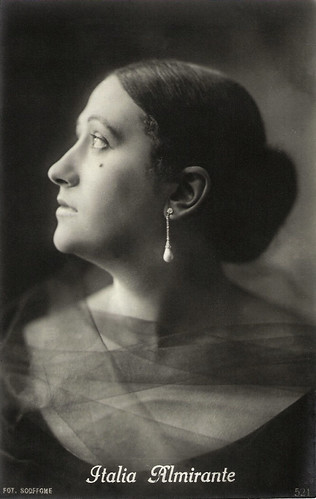
Italian postcard by Ed. Ballerini & Fratini, Firenze. Photo: Fot. Scoffone, no. 521.
Sources: Pasquale Almirante (Pasquale a Giorgio Almirante. Storia di una famiglia d'arte), Vittorio Martinelli (Le dive del silenzio - Italian), Facebook (Italian), Wikipedia (Italian) and IMDb. EFSP co-editor Ivo Blom published an article on Italia Almirante, 'Italia Almirante e le arti: Relazioni pittoriche, scultoree e teatrali in Femmina, La statua di carne e L’ombra‘, in: Alessandro Faccioli, Elena Mosconi eds., Divine. Nuove prospettive sul cinema muto italiano (Milano: Mimesis, 2022), pp. 89-106.
This post was last updated on 15 April 2023.
Great post. Had no idea Italia Almirante had died after being bitten by a poisonous insect. I wonder where in Brazil she was acting when that happened.
ReplyDeleteOne minor correction about one of your links: O Falcao Maltes is in Portuguese, not Spanish.
Thanks. I'll change the mistake.
ReplyDelete